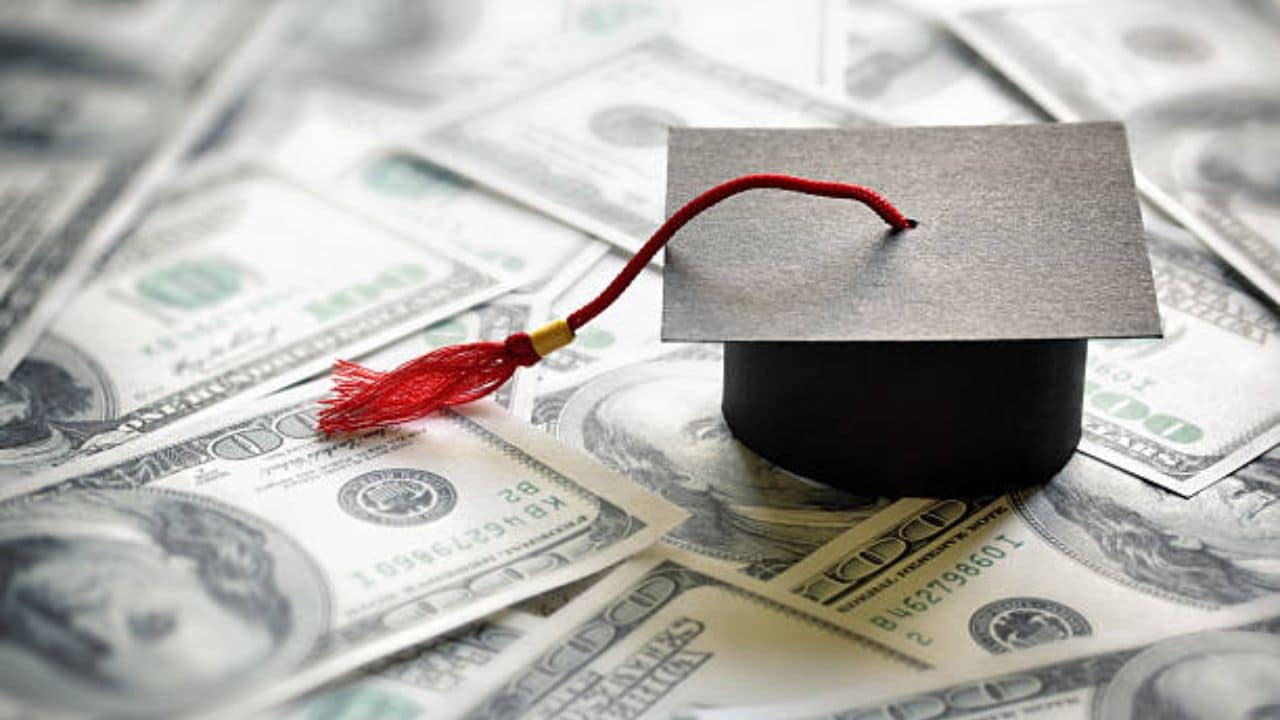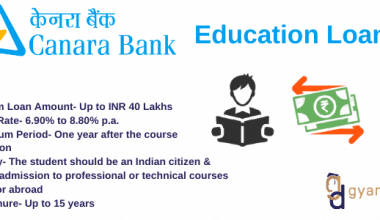No doubts COVID-19 has caused so much harm. Due to the negative impact on the economy of many countries, coronavirus student loan relief programs have been set up to aid you clear your debt.
Unfortunately, this information is not readily available to all and sundry. Reading this article grants you the privilege others may not have.
As Student Loan Forgiveness Programs clear your debts, the COVID-19 Student Loan Relief and assistance Programs puts a pause to your monthly payments without accruing interest until September 2022.
These student loan relief programs are established by Coronavirus Aid, Relief, and Economic Security (CARES) Act. Its aim is to give some flexibility to federal student loan borrowers.
I tell you, insight and understanding of these options can help you make more informed decisions about paying your bills and prioritizing your debts.
So, If you want financial relief for your student loans, this post is for you.
This is what to do….
Carefully read through this article which contains relevant information about Coronavirus student loan relief programs and assistance that can really help you pay up your student debts.
You can also navigate through the table of content below to get an overview of all this post entails.
The Covid-19 Pandemic is causing a lot of difficulties which has affected all categories of people including students. To help students get Rid of Student Loans this Period, the CARES Act provides temporary relief to students who are paying federal student loans.
In this loan relief program, if you are borrowed federal family education program loans (FFEL) or Perkins loans, this program is not for you.
Interestingly, with any of the student loan relief programs, you can stop paying your federal loans right away until September 30, 2022. And if the payments are automatically deducted from your bank account, you will be refunded.
Moreso, if you decide to continue making payments, there will be no interest rate charges. Therefore, any payment you make through tolerance can help pay off debts faster.
Student Loan Relief Programs
The US Department of Education major concern during this Covid-19 Period is to make the lives of students better even due they have to suspend their academic pursuit to stay at home just to stay safe.
To that effect, they have provided various student loan relief platform to help students are borrowed from lenders have less to worry.
Let’s look at some of the student Relief programs and their effects;
#1. Forbearance
Loan lenders have been mandated to grant administrative forbearance to any federal student loan borrower who applies.
That means, as a federal student loan borrower, you will not have to make payments for at least 60 days from March 13, 2022, and there will be no interest accrues during this period.
With Forbearance, you can reduce or suspend your monthly payments for a limited time, generally 12 months or less.
In addition, Education Secretary Betsy DeVos has announced it starting in 2022. March 13 For borrowers who are more than 31 days late, payments are automatically suspended.
This rule also applies to those who are more than 31 days late. The measure is valid until then.
Furthermore, If you are in an income-driven repayment (IDR) plan, your loans will also be suspended.
#2. Get a 0% interest rate
This is another student loan Relief program. And to be eligible, your federal student loans must be Defaulted and nondefaulted Direct Loans; Defaulted and nondefaulted FFEL Program loans or Federal Perkins Loans.
Note, if any of these loans are owned by commercial lenders, and the institution you attended, you won’t be able to apply for these loans.
Having 0% interest rate means that no interest rate will be accumulated until a certain time. If it pleases you, you can continue making payments but any payment you make will be applied to your origination fees and you can save a lot.
#3. Subsidized Loan & Pell Grant Program for Drop-out
If you are a school drop-out this loan relief program. Prior to this time, college or university drop out have there federal subsidized loan deducted.
However, due to the coronavirus crisis, the CARE Acts will allow you to retain your subsidized federal loan and be eligible for its benefits.
In addition, the scholarships or other financial aid you received will not be taken away from you.
This program is a kind of Coronavirus Student Loan Assistance program. If you were affected by this pandemic, either you lost your job, you were not able to be paid by your company or your school closed because of this crisis, you will get a work-study payment.
However, before you can be paid, your pace of study must meet up with the following; sure to start the semester after the crisis, continue to pay her faculty, staff, and other staff and must be in line with the institutional requirement for a portion of wages.
Once the institution promises to meet up with the above, your payment is certain.
#5. Income-Driven Repayment Plans
With the Income-Driven Repayment Plans, some of your federal student loan monthly payments will be limited to approximately 10% to 20% of your monthly income. The remaining balance can be released after 20-25 years of payments.
There are four Income-Driven Repayment Plans that you can choose from. Note, the plan you go for must depend on your income and the types of loans available.
And Monthly payments are generally determined based on your family size, adjusted gross income (AGI), and the appropriate loan balance.
See some of the available Income-Driven Repayment Plans options
First is the Revised Pay As You Earn Plan. To qualify for this plan, you must have applied for Direct Stafford loans. Your payment will be 10% of your discretionary income.
You will be more advantaged if you are earning a high income.
Next is option Pay As You Earn Plan. Just like the RPAYE Plan, you are eligible for direct Stafford loans and your payment will be 10% of your discretionary income.
Moreso, you will be more advantaged if you are married and have two sources of income even though its low.
Then you have the Income-Based Repayment (IBR) Plan. With this option, you can apply for Direct Stafford Loans and FFEL Program Loans.
Your payment will be 15% (10% for new borrowers) of discretionary income divided by 12. And if you don’t qualify for other income-driven repayment plans, this plan is the best for you.
Last but not least is the Income-Contingent Repayment (ICR) Plan. With this option, you can apply for Direct Stafford Loans and Direct Consolidation Loans.
When making payment, the lesser of your monthly payment on a fixed monthly payment plan throughout 12 years based on your income, or 20% of your discretionary income divided by 12
#6. Public Service Loan Forgiveness Program
Another Coronavirus Student Loan Assistance program you can get is in the area of the Public Service Loan Forgiveness Program.
What do I mean?
If you are a participant in any public service loan forgiveness program, your debt can be forgiven after you have made payment for 10 years.
Note, you can only qualify for this program if you are working for the government or working in any of the following fields; training, nursing, and fire fighting.
Basically, the CARES Act also suspends federal loan payments under the PSLF program. This means that your debt or loans will be forgiven even if they stop paying during the grace period
According to record, the Department of Education shows that as of June 2019, about 9% of the submitted applications were processed.
Additionally, less than 0.05% of eligible borrowers were disbursed. The main reasons people were not allowed to enter the program were incomplete application and failure to meet eligibility requirements.
#7. Deferment of Unemployment
Although this plan is not always the best option when it comes to the Student Loan Relief programs, it’s also relevant.
In getting unemployment deferment, which can be up to 3 years, you must reconfirm your unemployment status every six months.
Interestingly, this option is best for those that are unemployed. So if you are still unemployed at the end of the 6-month deferred pay period, unemployment Deferment is right for you.
Note, before you can apply, you must have searched for a full-time job and must also be registered with a public or private employment agency if it is within 50 miles of your permanent or temporary address.
Finally, if you are applying for an extension of your current unemployment deferment and do not provide documents proving that you are entitled to unemployment benefits, you must confirm that you have tried at least 6 diligently to find work in the last 6 months.
It is important to remember that interest will still accrue until loans are deferred. However, the interest in your loans is not currently applicable during the validity period of the emergency declaration.
#8. Military Student Loan Repayment Programs
Military personnel have access to a variety of programs that can help eliminate the burden of student loans.
Among them is the Army Student Loan Repayment Program. The Army can repay up to $65,000 of eligible loans.
To qualify for this Student Loan Assistance program you must have a High school diploma and 50 points or more on the Armed Forces Professional Training Battery (ASVAB).
Also, the loans must be granted, insured, or guaranteed before taking office.
#9. Consolidate or refinance your student loans
If you have loans from multiple sources, your employee or lender may offer to repay them in exchange for a new loan with a lump sum and interest rate.
With Consolidation, your monthly payments can be reduced. It also means that you will pay more interest in the long term.
If you applied for consolidate federal loans, this option is best for you. The goal is to get a lower general loan interest rate.
#10. Employer contributions for student loans
This is very interesting I tell you!
Coronavirus Aid, Relief, and Economic Security Act commonly known as the CARES Act also implemented the Tax-Free Employer Contributions for student loans.
How does it work? I will tell you
If you are working for someone, your employer is to pay your student loans as an employee benefit.
Not just that, as far as this year is concerned, he or she is expected to pay up to $5,250 of your student loans tax-free this year.
#11. Suspension of Student Loan Debt Collection
Another student loan relief program enacted by the CARES Act is Suspension of Student Loan Debt Collection program.
This program stops the involuntary collection of student loan debt during this COVID-19 period, including garnishment of wages, tax refunds, and Social Security benefits.
According to Forbes.com, The president of the United States of America stopped the collection of student loan debt from 9 million student loan borrowers who have defaulted on their federal student loans early this month.
Also, New York Governor Andrew Cuomo temporarily suspended the collection of student loan debt and also suspended mortgage payments for those facing financial difficulty.
This is one major way the government helped in relieving student loans. So if you are paying any student debt, this is the time for you to smile.
Having see some of the student loan relief programs you can actually benefit from I am sure you are a bit confused right now on the one to choose because the all have mouth-watery benefits.
I will help you make the right choice because your satisfaction is my major concern. To that effect, I have put down below two effective tips on how to find the Right Student Loan Relief Program.
How to Find the Right Student Loan Relief Program
This is very important.
First is to consult your financial advisor. You can get hands-on help from him or her. With sure help, you can make the right choice in settling your student loan debt and all your financial objectives.
Also, Federal student loan relief efforts in response to global distress like the Coronavirus is temporary.
But you’ll likely always have access to some kind of student loan debt relief program. Your state may sponsor several. Or your job title alone can make you eligible for certain programs.
Furthermore, before you choose any Student Loan Relief Program, consider your income earning or your source of income.
Managing money during a Corona virus Crisis
This aspect is very important.
Its one thing to get loan and another thing to use it jurdiciously especially in the pandemic period that the economy is going down drastically.
You tends to get less and spend more. Knowing how to Manage your money this Corona virus period can really help you plan for the future.
And with these Student loan payments and deferred interest programs going on, the right time to start making that plan is NOW.
This is how to go about it….
Have a plan in mind and then consult your local financial advisor for professional assistance in implementing the plans.
You can also consider creating a budget using the SmartAsset Budget Calculator.
Are you interested in becoming a nurse and you are scared of the cost? You can go for any of these Best Student Loans for Nursing Students
Beneficiary of Corona virus Student Loan Relief Programs
These Student Loan Relief Programs favors only federal loan borrowers, and particularly loans from the Department of Education.
So, if you are a federal loan borrower, you are likely to benefit from these programs, unlike private loans, federal family education loans (FFEL), and Perkins loans borrowers who are not eligible.
Moreso if you are involved in redundancy programs like the Public Service Loan Forgiveness (PSLF) and Income Related Payment (IDR), you can also gain from these student loan assistance programs.
FAQs
The aim of Coronavirus Student Loan Relief Programs is to help students get Rid of Student Loans this Period of Covid-19 Pandemic.
There are so many student Relief programs available this pandemic period. some of them include;
Forbearance
Get a 0% interest rate
Income-Driven Repayment Plans
Coronavirus-Affected Students work-study Payment
Subsidized Loan & Pell Grant Program for Drop-out……
These Student Loan Relief Programs favors only federal loan borrowers, and particularly loans from the Department of Education.
Sources
- https://smartasset.com/financial-advisor/coronavirus-student-loan-relief-programs
- https://www.forbes.com/sites/zackfriedman/2020/04/04/how-to-get-coronavirus-student-loan-relief/#13b6ce5d4eb4
- https://www.consumer.ftc.gov/blog/2020/05/coronavirus-and-your-student-loan-debt
- http://www.kake.com/story/41933286/coronavirus-student-loan-relief-programs-all-you-need-to-know





